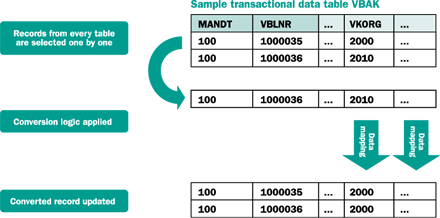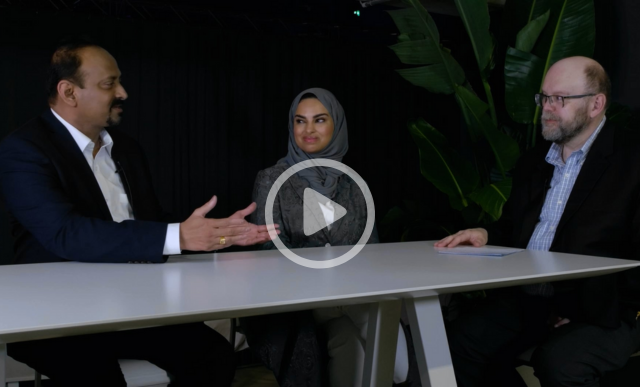Although maintaining a less-than-optimal org structure has obvious drawbacks, many companies keep their current system because of the perceived difficulty involved in changing it. The author introduces an unconventional way of changing an org structure and compares it to the traditional method.
If you are a member of a team of business analysts in charge of a mid- to large-scale R/3 system, then you are very
aware of the importance of a well-designed R/3 organizational structure. The org structure design has ripple effects that
influence a number of processes positively or negatively depending on the quality of the design. It affects your reporting
capabilities, ease of business process design, master data maintenance, authorizations and
security, and many other areas.
Creating and maintaining a good R/3 org structure design is not a simple task. Requirements might not have
been clear when the org structure was set up at the early implementation stage. Furthermore, various org structure options
are not well understood.
It is also likely that the requirements have changed over time. For example, purchasing departments might
have been centralized to eliminate the need for separate purchasing organizations for each location. Perhaps sales
organizations were reorganized. Consequently, the org structures at many companies are not set up in the best possible
way.
Whatever the reason may be, changing an already established organizational structure is not an easy task.
Since every document, line item, and posting is assigned to multiple org structure elements, and historical transactional
data can not be restated, changing org structures in midstream is next to impossible with conventional methods. As a
result, companies often maintain a less-than-ideal status quo for a long time.
I recently helped one company consolidate 14 sales organizations into six as well as five purchasing
organizations into one. The method that we used was unconventional and relied on a custom-developed toolset. I will
explain how we did it in the hope that you might find the approach useful in your situation. First, let me review the
conventional method to change org structures in midstream.
The Conventional Method
The conventional method is to set up a new structure in addition to the old (and obsolete) structure. You
then gradually retire the old structure by letting the existing and still active data assigned to the old org
elements "die out" while assigning all newly created documents to the newly defined organizational elements.
You typically control the process by adjusting the authorization profiles
of users such that they have only display and change privileges for old organizational elements. This
ensures that new documents are created with reference to only the new organizational structure, allowing the old structure
to become completely
inactive over time.
The disadvantage to this method is that it creates a shift in the historical data, making reporting and
comparisons difficult. This is because the shift usually does not happen on a certain date; it happens gradually as
existing transactions are "flushed out" — e.g., you would set up your new structure of sales organizations and sales
offices and would pick a cut-off date on which you would start creating sales orders against the new structure. You would
still have to process already existing sales orders that are in progress.
Realigning the Old
with the New
The unconventional method we used to realign all or a subset of historical transactional data to a new
organizational structure uses a set of custom-developed programs that we refer to as the "data conversion toolset." The
main idea behind this approach is to technically modify the data records based on carefully defined conversion rules. Here
are the steps for the example of consolidating sales organizations (Figure 1):

Figure 1
Sales orgs 2000 and 2010 are consolidated as sales org 2000
Note
The data conversion toolset is a complex piece of proprietary code, and describing it here is beyond the scope of this article. The following steps outline the objectives of the toolset and the main logic of the process.
Step 1. Identify the technical object that needs to be changed. In our case, it was
Sales organization represented by the technical domain VKORG.
Step 2. Define the logic of the "conversion rule." The conversion rule can be a
simple 1:n mapping (a 1:1 mapping would result only in renaming or recoding the sales organization) as shown in Figure 1,
or it could be implemented as custom code for more complex conversion requirements.
Step 3. Implement the conversion rule (mapping table or custom code) in the toolset.
Step 4. The toolset assisted us in identifying all database tables that reference
VKORG — for example, the sales order header table VBAK (Figure
2). This step is of utmost importance to ensure data integrity after the conversion. This is done by using the
toolset's "where-used" function, which identifies all table fields assigned to the data element or the domain
VKORG.

Figure 2
The toolset helps identify all tables that reference technical domain VKORG
In a typical R/3 implementation, you might get a list of approximately 600 tables for this example. The
number varies based on condition tables, Controlling-Profitability Analysis (CO-PA) tables, information structure tables,
and so on, that might have been added through customizing.
Step 5. The conversion rule can now be automatically or manually assigned to all or
selected table fields identified in the last step.
Step 6. The toolset automatically
generates an ABAP conversion program for each table that the
conversion rule was assigned to in the previous step. The conversion rule is embedded in the conversion
programs. The conversion programs follow a simple logic as follows: sequential read of the table, modify the data record
according to the embedded conversion rule, and update the data record.
Step 7. All conversion programs are scheduled to run as background jobs.
The end result is a technically converted data basis reflecting the changed organizational structure.
Dangers and Limitations
This method changes many data records without applying any functional validations, so the danger of
corrupting the data integrity is great. If carefully used, however, you can apply this approach to many different problems
that would otherwise be very difficult to solve.
You could use this method for any data object for which R/3 does not offer a standard way of changing that
needs to be changed. The applications can be as simple as a straightforward 1:1 renaming or renumbering of an object such
as a material number (e.g., for data harmonization purposes) or complex processes such as conversion of a general ledger
chart of accounts.
However, this approach has limitations. It is successful only if all references to the converted data
object are found and converted correctly. Also, the "where-used" function has these limitations:
- Usage of one and the same domain for one object is not consistent across the entire R/3 data
dictionary. The same data object is sometimes assigned to a number of different domains or data elements depending on when
and by which development team it was created. For example, "language" is sometimes defined with the domain
LANGU and sometimes with SPRAS. A search of all table fields assigned to
SPRAS, therefore, will provide an incomplete list. Dealing with cases like this requires additional
manual steps.
- In many areas of the R/3 data model, generic character fields are used that can hold many different
objects of many types. One example is the field OBJECTID, which is part of the key of the change
documents header table CDHDR. This field can potentially hold the ID of any objects for which change
documents are generated.
- The conversion process could, depending on the size of the R/3 database, be time intensive.
Table 1 compares the conventional method to the method introduced here. This process is,
without a doubt, an intrusive operation that should be applied with the utmost care and lots of testing. It should not be
used if there are less-intrusive alternatives. It does, however, make possible changes and realignments that would
otherwise be impossible.
|
Classical approach
- Create new sales org and allow newsales only for new sales org
- Discontinue creation of orders for old sales orgs
- Usage of old sales orgs will eventually stop
|
Unconventional approach
- Create new sales org
- Restate all historical data (assign all sales and order items to new sales org)
|
|
Result
- Historical data inconsistent
with current design
|
Result
- Historical data consistent with new
org structure (as if it has always
been like that)
|
|
| |
| Table 1 |
Consolidation of multiple sales orgs into one using
classical vs. unconventional methods |
|
Ali Sarraf
Ali Sarraf is the managing partner at Enowa Consulting. He has 15 years of experience as a senior consultant for SAP Business Suite applications and 20 years of IT experience. During much of his career, he has focused on helping customers optimize their logistics business processes by analyzing and explaining cause-and-effect relationships and by bringing the machine and the human sides of IT closer together.
You may contact the author at ali.sarraf@enowa.com.
If you have comments about this article or publication, or would like to submit an article idea, please contact the editor.







